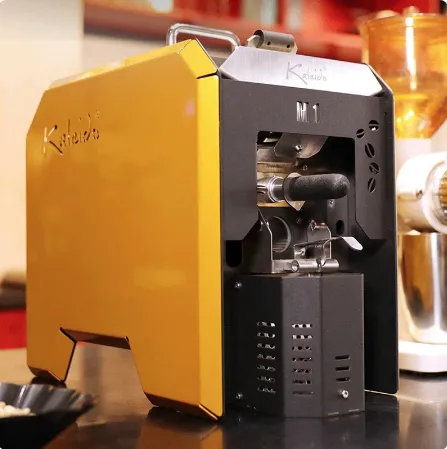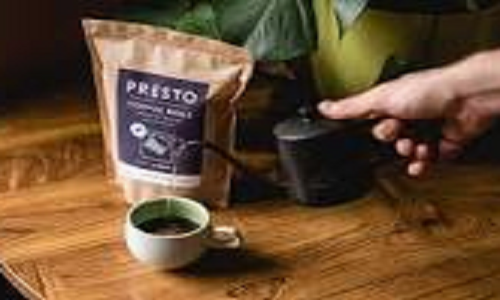Discover the secrets to finding the best coffee beans! Our experts share 6 insider tips for selecting top-quality coffee beans that will elevate your morning brew. Learn more now!
Table of Contents
Are you tired of settling for mediocre coffee beans? Do you dream of waking up to the aroma of freshly ground, premium quality beans that transport you to a cozy café in Italy? If so, you’re not alone.
Coffee enthusiasts are on an eternal quest for the perfect beans that promise a rich, full-bodied flavor and an unparalleled sensory experience.
Fortunately, our team of coffee connoisseurs has delved deep into the world of coffee beans to uncover six secret tips that will revolutionize your morning brew.
From understanding different bean varieties to mastering the art of roasting, we’re here to guide you on a journey towards discovering the best coffee beans that will elevate your daily cup to extraordinary heights.
So grab your favorite mug and get ready to embark on a caffeinated adventure as we unveil the secrets behind finding truly exceptional coffee beans.

The Art of Coffee Bean Selection
– Coffee bean selection involves origin, processing, and flavor profiles
– Each region produces beans with distinct characteristics
– Understanding flavor nuances is essential for selecting the perfect beans
– Exploring processing methods can unlock new layers of complexity
– Delving into nuances leads to newfound appreciation for coffee beans
– Mastering the art means honing your palate and embracing endless possibilities
The art of coffee bean selection is much more than simply choosing a bag off the shelf. It’s an intricate process that involves consideration of origin, processing methods, and flavor profiles.
Each region produces beans with distinct characteristics, from the fruity and floral notes of Ethiopian Yirgacheffe to the chocolatey richness of Colombian beans. Understanding these flavor nuances is essential for selecting the perfect beans to suit your palate.
Moreover, exploring different processing methods such as washed, natural, and honey-processed can unlock new layers of complexity in your coffee experience.
The way coffee cherries are treated after harvest significantly impacts the final flavor in your cup.
Taking the time to delve into these nuances can lead to a newfound appreciation for the diversity and depth of coffee beans worldwide.
Ultimately, mastering the art of coffee bean selection means honing your palate and embracing the endless possibilities that this beloved beverage has to offer.
How to Finding the Perfect Coffee Beans
Discover the best coffee beans with our 6-secrets Coffee Beans: Our Experts Share 6 Secrets to Finding The Best Beans guide. Find your perfect brew today. Expert tips and recommendations included.

1. Understanding Coffee Bean Varieties
– Arabica and Robusta beans have significant flavor and caffeine differences
– Sub-varieties like Typica, Bourbon, and Geisha contribute distinct flavor profiles
– Growing regions influence flavor nuances, such as Ethiopian coffees with fruity notes and Brazilian coffees with nutty undertones
– Understanding coffee bean varieties enriches the coffee experience by allowing for customized flavor and brewing choices
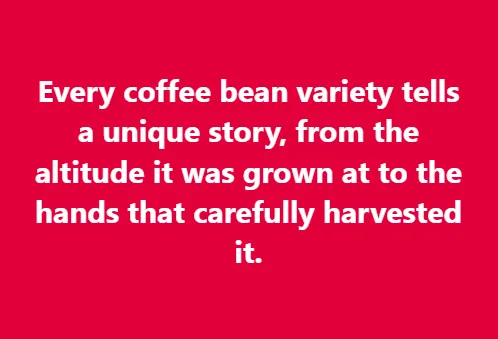
When it comes to understanding coffee bean varieties, it’s essential to recognize the significant differences between Arabica and Robusta beans.
While Arabica is known for its smooth, complex flavors and aromatic qualities, Robusta offers a strong, bold taste with higher caffeine content.
Additionally, within these two broad categories exist countless sub-varieties such as Typica, Bourbon, and Geisha for Arabica beans, each contributing distinct flavor profiles based on factors like altitude, soil quality, and climate.
Moreover, delving into the world of coffee bean varieties unveils the influence of growing regions on flavor nuances.
For instance, Ethiopian coffees often possess fruity notes and vibrant acidity due to the region’s diverse microclimates and traditional processing methods.
Conversely, Brazilian coffees often offer nutty undertones with a heavy body owing to their low acidity caused by growing in lower elevations.
Understanding these various coffee bean varieties can enrich your coffee experience by enabling you to choose beans that match your preferred flavor profiles and brewing methods while celebrating the diversity of this beloved beverage.
2. Factors to Consider When Buying Coffee Beans
– Coffee roast levels: light, medium, dark, each with unique flavors
– Origin affects flavor: climate, altitude, soil composition
– Freshness is crucial for optimal flavor
– Consider buying from local roasters for peak freshness
– Match grind size with brewing method for best results

When purchasing coffee beans, it’s essential to consider the roast level. Each roasting level – light, medium, and dark – imparts unique flavors, ranging from bright and acidic to rich and bold.
Understanding your preference can help you select the perfect roast for your taste buds. Additionally, origin plays a crucial role in the flavor profile of coffee beans.
Different regions produce beans with distinct characteristics, influenced by factors like climate, altitude, and soil composition.
Exploring coffees from various origins can introduce you to a diverse range of tastes and aromas, allowing you to discover your preferred flavor profiles.
Moreover, freshness is paramount when buying coffee beans. Opting for freshly roasted beans ensures optimal flavor and complexity in each cup.
Consider purchasing from local roasters or suppliers with transparent roasting dates to guarantee that you’re receiving top-quality beans at their peak freshness. Finally, think about your brewing method as you shop for coffee beans.
The grind size needed for espresso will differ from that suitable for French press or pour-over techniques.
By aligning the grind type with your preferred brewing method, you can maximize the potential of each batch of coffee beans and elevate every sip of your daily brew.
3. Where to Source High-Quality Coffee Beans
– Roast level crucial for flavor: light, medium, dark
– Origin affects taste: explore diverse regions
– Freshness key: buy freshly roasted beans
– Consider brewing method for optimal flavor and complexity

When it comes to sourcing high-quality coffee beans, direct trade relationships with coffee farmers can be a game changer.
By establishing these direct connections, roasters and consumers can ensure that the farmers receive fair compensation for their work and produce high-quality beans through sustainable practices.
This not only supports the livelihoods of coffee farming communities but also guarantees access to exceptional beans with unique flavors and profiles.
Another excellent way to source top-notch coffee beans is by exploring micro-lots. These small batches of coffee are carefully cultivated and curated by skilled producers, resulting in exquisite flavor complexities that cannot be found in larger-scale productions.
Exploring micro-lots allows you to experience the artistry of coffee farming and savor truly exceptional beans that offer a one-of-a-kind drinking experience.
Additionally, seeking out reputable specialty coffee importers can provide access to a wide array of high-quality beans from different regions around the world.
These importers often have deep knowledge of the coffees they source and can offer valuable information about flavor profiles, processing methods, and ethical sourcing practices.
Partnering with such importers can open up a world of diverse and remarkable coffee bean options for enthusiasts seeking an unparalleled brew.
4. Tips for Roasting and Storing Coffee Beans
– Roasting coffee beans at home: preheat oven, spread beans, monitor color and aroma
– Cool beans before storing in airtight container to preserve flavor and aroma
– Store in airtight container away from light, moisture, heat, and oxygen
– Avoid freezing or refrigerating to prevent compromising flavor profile

Roasting coffee beans at home can be a rewarding and delicious experience. To achieve the perfect roast, start by preheating your oven to 450°F and spreading the beans evenly on a baking sheet.
Keep an eye on them as they roast, and be prepared for their color and aroma to change rapidly toward the end of the roasting process.
Once roasted, allow the beans to cool completely before transferring them to an airtight container to preserve their flavor and aroma.
When it comes to storing your coffee beans, there are a few key considerations to keep in mind. It’s essential to store them in an airtight container away from light, moisture, heat, and oxygen – all of which can degrade the quality of the beans over time.
Additionally, refrain from freezing or refrigerating your coffee beans as this can lead to condensation and compromise their flavor profile.
By following these tips for roasting and storing coffee beans, you’ll be able to savor every cup of freshly brewed coffee at its best.
5. Brewing the Perfect Cup with Your Chosen Beans
– Select the right beans for your taste
– Experiment with grind size for different flavors
– Try various brewing methods like French press, pour-over, or espresso
– Adjust water-to-coffee ratio for strength
– Pay attention to water temperature for flavor profile

Brewing the perfect cup of coffee starts with selecting the right beans for your palate. Once you have found your chosen beans, it’s time to focus on the brewing process to extract the best flavors and aromas.
One important factor is the grind size: a finer grind will lead to a stronger flavor, while a coarser grind will produce a milder taste.
Experiment with different brewing methods such as French press, pour-over, or espresso machine to find the perfect extraction that complements your chosen beans.
Consider experimenting with the water-to-coffee ratio as well. This plays a crucial role in determining the strength and intensity of your brew.
Additionally, paying attention to water temperature can significantly impact the final flavor profile of your coffee.
By fine-tuning these variables according to your chosen beans’ unique characteristics, you can elevate your coffee experience and savor every sip in its full potential.
6. Exploring Flavor Profiles and Tasting Notes
– Exploring flavor profiles and tasting notes is a sensory journey
– Coffee beans offer unique taste experiences based on region and varietal
– Tasting notes enhance appreciation for different origins and processing techniques
– Subjectivity of tasting notes leads to delightful conversations and shared experiences
– Open-minded approach encourages curiosity and eagerness to try new beans
– Flavor profiling celebrates diversity within the world of coffee

Exploring flavor profiles and tasting notes is like embarking on a sensory journey, unlocking the intricate nuances hidden within each coffee bean.
From the bright acidity of Ethiopian Yirgacheffe to the rich chocolatey undertones of Guatemalan Antigua, every region and varietal offers a unique taste experience.
By paying attention to tasting notes, you can enhance your appreciation for different coffee origins and processing techniques, elevating your morning ritual from a simple caffeine fix to a flavorful exploration.
As you delve into the world of coffee flavors, it’s important to understand that tasting notes are profoundly subjective.
What one person detects as floral might be perceived as fruity by another. Embracing this subjectivity can lead to delightful conversations and shared experiences with fellow coffee enthusiasts.
This open-minded approach encourages curiosity and an eagerness to try new beans from varying roasters, ultimately broadening your palate and deepening your understanding of what makes the perfect cup for you.
Flavor profiling becomes not just an exercise in discerning tastes but also a celebration of diversity within the world of coffee.
What is Coffee Beans
– Coffee beans sourced from bright red berries on the Coffea plant
– Two main types of coffee beans: arabica and robusta, each with unique flavors
– Freshness is crucial for peak flavor; beans lose freshness after roasting
– Consider origin factors like altitude, climate, and soil for unique taste
– Understanding coffee bean selection can enhance the morning brew with rich flavors
Coffee beans are the heart and soul of every coffee lover’s morning ritual. But what exactly are these magical little beans that give us our daily dose of caffeine?
Coffee beans actually start their journey as seeds inside bright red berries that grow on the Coffea plant.
These berries, once ripe, are handpicked and processed to extract the seeds, which we know as coffee beans.
There are two main types of coffee beans: arabica and robusta, each with its own unique characteristics and flavor profiles.
When it comes to finding the best coffee beans, freshness is key. The moment coffee beans are roasted, they begin to lose their peak flavor and freshness, so purchasing freshly roasted beans is crucial for an exceptional cup of joe.
Additionally, considering the origin of the beans is vital for understanding their flavor profile – factors such as altitude, climate, soil type all contribute to the unique taste of each batch of coffee.
By delving into these secrets of coffee bean selection, you can elevate your morning brew to new heights of aromatic bliss and rich flavors.
Why are they called coffee beans?
– Eating coffee beans for flavor and caffeine is popular
– Originated in Ethiopia
– Enjoyed for texture, taste, and energy boost
– Appreciated for savoring coffee varieties and health benefits
– Allows greater absorption of oils and beneficial compounds
– Supports cognitive function and overall well-being
– Growing interest in snacking on coffee beans
The term coffee beans is actually a misnomer, as coffee beans are not beans at all. In reality, they are the seeds of the coffee plant’s fruit, known as cherries.
This misleading name may have originated from their appearance, which resembles that of typical leguminous beans.
Additionally, their similarity in size and shape to actual beans may have also perpetuated the use of this term.
Another reason behind calling them coffee beans could be attributed to historical events. When coffee was first introduced in Europe during the 17th century, it was often referred to as Arabian wine.
This could have led people to liken the seeds to grapes or other fruits commonly used in winemaking.
Over time, this association might have evolved into calling them beans, despite their botanical classification as seeds.
So while we refer to them as such today, it’s essential to recognize that coffee doesn’t actually come from any type of bean – it comes from cherries!
Why do people eat coffee beans?
– Eating coffee beans for flavor and energy is popular
– Originated in Ethiopia, enjoyed for texture, taste, and energy boost
– Provides a way to savor coffee varieties and health benefits
– Allows greater absorption of natural oils and beneficial compounds
– May support cognitive function and overall well-being
It might seem unusual, but many people enjoy eating coffee beans for the intense burst of flavor and caffeine they provide.
The practice of consuming whole coffee beans is believed to have originated in Ethiopia, where coffee as a beverage was first discovered.
Some individuals appreciate the crunchy texture and slightly sweet taste of roasted coffee beans, while others consume them as a quick energy boost when they don’t have time to brew a cup of coffee.
Additionally, some find eating coffee beans an experiential way to savor the complexity of different coffee varieties and origins.
Moreover, for some health enthusiasts, eating coffee beans is seen as a convenient way to receive the potential health benefits associated with consuming caffeine and antioxidants.
Unlike brewed coffee, which filters out much of the natural oils present in the bean, consuming them whole allows for greater absorption of these beneficial compounds.
In addition to providing a jolt of energy, there is also evidence suggesting that consuming moderate amounts of whole coffee beans may help support cognitive function and overall well-being.
As such, it’s no wonder that more people are exploring the unique experience of snacking on these tiny power-packed bites.
What type of beans are coffee beans?
– Coffee beans are actually seeds of a fruit called coffee cherry
– Two main varieties: Arabica (smooth, sweet) and Robusta (strong, robust, higher caffeine)
– Understanding bean type gives insight into flavor and origin
– Lesser-known varieties like Liberica and Excelsa offer unique flavors
– Knowing bean type can lead to diverse coffee experiences and informed choices
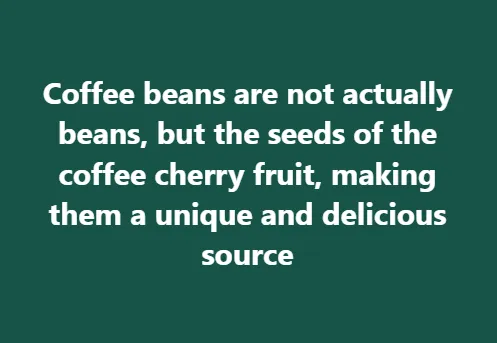
Coffee beans are not actually beans in the traditional sense; they are the seeds of a fruit called coffee cherry.
These seeds are found inside the fruit, typically two per cherry, and they undergo a complex process to become the aromatic coffee beans we know and love.
The two main varieties of coffee beans are Arabica and Robusta, each with its own unique flavor profile and growing conditions.
Arabica beans are known for their smooth, sweet taste and often considered to be of higher quality, while Robusta beans have a stronger, more robust flavor with higher caffeine content.
Understanding the type of bean used in your coffee can give you valuable insight into its flavor characteristics and where it was grown.
In addition to Arabica and Robusta, there are lesser-known varieties such as Liberica and Excelsa that offer distinctive flavors but are less commonly found in mainstream coffee production.
Exploring these different types of coffee beans can open up a world of new tastes for any coffee enthusiast.
By knowing the type of bean that goes into your cup, you can appreciate the diversity within the world of coffee and make more informed choices when selecting your next bag of beans.
Which coffee beans are the best?
– Best coffee beans depend on personal preference
– Arabica beans favored for smooth, complex flavors and lower acidity
– Ideal for espresso, pour-over, or French press
– Ethiopian Yirgacheffe known for floral and fruity notes and delicate acidity
– Unique growing conditions in Ethiopia contribute to distinct flavor profile
– Best coffee beans are subjective and depend on individual taste preferences
When it comes to finding the best coffee beans, it all boils down to personal preference. However, there are certain types of coffee beans that consistently stand out for their quality and flavor profile.
Arabica beans are often hailed as the top choice for many coffee enthusiasts due to their smooth, complex flavors and lower acidity compared to Robusta beans.
These beans are known for their versatility, making them ideal for various brewing methods such as espresso, pour-over, or French press.
Another notable contender in the world of top coffee beans is Ethiopian Yirgacheffe. These beans are renowned for their floral and fruity notes with a delicate acidity that sets them apart from other varieties.
The unique growing conditions in Ethiopia contribute to the distinct flavor profile of these beans, making them highly sought after by those who appreciate a more nuanced and exotic cup of coffee.
Ultimately, the best coffee beans are subjective and depend on your individual taste preferences; however, exploring different varieties like Arabica and Ethiopian Yirgacheffe can open up new dimensions of flavor in your daily brews.
Coffee beans insects
– Coffee beans are susceptible to pests like the coffee berry borer beetle
– Farmers use natural pest control methods to protect coffee beans
– Insects may impact the flavor profile of coffee beans
– Some experts believe insects contribute to a unique taste in coffee
– Insects add an unexpected dimension to the flavor of coffee beans
Did you know that coffee beans are often prone to infestation by insects? It’s a little-known fact that certain pests, such as the coffee berry borer beetle, can cause significant damage to coffee crops.
These tiny insects can easily infiltrate the beans during growth and storage, leading to decreased quality and flavor.
In response, many farmers have turned to natural pest control methods, such as introducing predator insects or using organic repellents, in order to protect their precious coffee beans from these invasive pests.
While it may seem like an unappetizing thought, the presence of insects can actually impact the flavor profile of coffee beans.
Some experts believe that certain insects contribute to a unique taste in the final brew by interacting with the beans during their development.
This lends an intriguing twist to the world of coffee tasting and appreciation – it turns out that some of those complex flavors we savor might just be attributed to our tiny insect friends.
So next time you take a sip of your favorite brew, consider thanking those little critters for adding an unexpected dimension to your morning pick-me-up.
How do you get rid of coffee bean weevils?
– Freeze coffee beans for 72 hours to kill weevil eggs/larvae
– Use diatomaceous earth as a non-toxic insecticide
– Invest in airtight containers, add bay leaves or cedar chips
– Clean storage area, inspect new batches for infestation
– Follow these methods for pest-free, fresh coffee every time
If you’re facing the pesky problem of coffee bean weevils, there are a few methods you can try to get rid of them. One effective technique is to freeze your coffee beans.
Simply place the affected beans in an airtight container and store them in the freezer for at least 72 hours to kill off any weevil eggs or larvae.
Another approach is to use diatomaceous earth, a natural and non-toxic insecticide, by sprinkling it around the storage area to deter and eliminate weevils.
Furthermore, proper storage is key to preventing future infestations. Invest in high-quality airtight containers to keep your coffee beans safe from pests, and consider adding bay leaves or cedar chips inside the containers as their strong aromas repel weevils.
Regularly cleaning your storage area and inspecting new batches of coffee for signs of infestation can also help maintain pest-free beans.
By incorporating these strategies into your coffee bean care routine, you can enjoy fresh, pest-free cups of joe every time.
How do you get rid of coffee beetles?
– Coffee beetles can be frustrating for coffee bean protection
– Freeze beans for 72 hours to kill beetle larvae
– Store beans in cool, dark, low humidity environment
– Use airtight containers or vacuum-sealed bags for storage
– Regular cleaning and maintenance of storage containers and equipment helps deter beetles
If you’ve ever come across coffee beetles, you’ll know how frustrating it can be to protect your precious beans.
One effective way to get rid of these pesky pests is by freezing your coffee beans. Simply place your beans in an airtight container and pop them into the freezer for at least 72 hours.
This will effectively kill any coffee beetle larvae present in the beans. Another method is to store your coffee in a cool, dark place with low humidity, as this environment is less conducive to beetle infestation.
Additionally, consider investing in airtight containers or vacuum-sealed bags to store your coffee beans. This not only helps prevent beetle infestation but also maintains the freshness of the beans for longer periods.
Lastly, regular cleaning and maintenance of your storage containers and coffee equipment can also go a long way in deterring beetles from making themselves at home among your prized coffee beans.
By being proactive and implementing these strategies, you can enjoy your favorite brew without worrying about unwanted visitors wreaking havoc on your supply.
What is a coffee bean infestation?
– Coffee bean infestation threatens quality and flavor
– Common infestations: coffee berry borers, leaf rust, cherry disease
– Infestations lead to decreased yields, lower quality, and higher costs
– Many turn to sustainable and organic farming practices to combat infestations
– Natural predators and biocontrol methods used to manage infestations
– Awareness of risks crucial for sourcing and roasting high-quality coffee beans
– Supporting sustainable farming preserves flavor and integrity of coffee
Coffee bean infestation is a serious threat to the quality and flavor of coffee beans. Common infestations include coffee berry borers, coffee leaf rust, and coffee cherry disease, all of which can wreak havoc on coffee crops.
The presence of these pests can lead to decreased yields, lower quality beans, and increased production costs for farmers.
To combat these infestations, many coffee producers are turning to sustainable and organic farming practices.
This not only helps control pest populations but also promotes healthier ecosystems around the coffee plantations.
Some farmers also use natural predators or biocontrol methods to manage infestations without resorting to harmful pesticides.
In the end, being aware of the potential risks posed by infestations is crucial for anyone in the business of sourcing or roasting high-quality coffee beans.
By supporting sustainable farming practices and staying informed about potential threats to coffee crops, consumers can play a role in preserving the flavor and integrity of their favorite brews.
What is the main pest in coffee?
– Coffee borer beetle is a major pest of coffee plants, causing decreased yield and quality
– Farmers combat the beetle using environmentally friendly pesticides, proper crop management, and natural predators
– Sustainability initiatives promote organic farming and healthy ecosystems in coffee plantations
– Understanding and supporting sustainable farming practices is crucial for the future of coffee production

The main pest that plagues coffee plants is the notorious coffee borer beetle, also known as the broca in Latin America.
This small but destructive insect burrows into the coffee cherry and lays its eggs, leading to an infestation that can significantly reduce crop yield and quality.
The damage caused by the coffee borer beetle can result in decreased profits for farmers and a lower quality of beans reaching the market.
To combat this relentless pest, farmers have been exploring various methods such as using environmentally friendly pesticides, implementing proper crop management practices, and experimenting with biological controls such as introducing natural predators of the coffee borer beetle.
Sustainability-focused initiatives are also gaining traction, promoting organic farming techniques that minimize reliance on chemical solutions while promoting healthy ecosystems within the coffee plantations.
Understanding the threat posed by pests like the coffee borer beetle sheds light on the challenges facing coffee production worldwide.
By acknowledging these issues and supporting sustainable farming practices, consumers can play a crucial role in ensuring a brighter future for their beloved cup of joe.
Types of coffee beans
– Coffee beans offer rich variety
– Arabica: smooth, mild, high acidity
– Robusta: strong, bitter, high caffeine
– Liberica: fruity, floral, gaining popularity
– Excelsa: complex, tart, fruity, adds depth to blends
When it comes to coffee beans, there is a rich variety of options to explore. Two of the most popular types are Arabica and Robusta.
Arabica beans are known for their smooth, mild flavor with a slightly higher acidity, making them well-suited for specialty coffees.
On the other hand, Robusta beans have a stronger, more bitter taste and contain almost double the amount of caffeine compared to Arabica.
Despite its robust flavor profile, Robusta is often used in espresso blends for its ability to produce a rich crema.
Another intriguing type is the Liberica bean, which has gained attention for its unique fruity and floral notes.
Originally native to Liberia but now grown in various regions worldwide, Liberica offers a distinct coffee experience that truly sets it apart from traditional Arabica and Robusta options.
Its demand has been steadily increasing as coffee enthusiasts seek new flavors beyond the typical spectrum.
Lastly, there’s the lesser-known Excelsa bean with its complex flavor profile that’s simultaneously tart and fruity.
Excelsa adds an unexpected depth to blends when incorporated into medium or dark roasts.
While not as widely available as Arabica or Robusta beans, encountering Excelsa can be a delightful surprise for those who appreciate diverse flavors in their cup of joe.
What are the 4 types of coffee?
– Various coffee types: Arabica, Robusta, Liberica, Excelsa
– Arabica: smooth, aromatic, higher acidity
– Robusta: strong flavor, higher caffeine, popular for espresso
– Liberica: fruity, floral aroma, less common
– Excelsa: complex flavor, fruity and spicy notes
– Understanding these types can help find the perfect match
– Experimenting with these types leads to discovering unique aromas and flavors
When it comes to coffee, there is a wide variety of choices available, each with its own unique flavor profile and brewing methods.
Among the most popular types of coffee are Arabica, Robusta, Liberica, and Excelsa. Arabica is often regarded as the most flavorful and aromatic type of coffee beans, known for their smooth taste and higher acidity compared to other varieties.
On the other hand, Robusta is favored for its strong flavor and higher caffeine content, making it a popular choice for espresso blends.
Liberica coffee beans are less common but offer a distinct fruity and floral aroma, while Excelsa beans provide a complex flavor profile with hints of fruity and spicy notes.
Understanding the characteristics of these different types of coffee can help you explore new flavors and find the perfect match for your taste preferences.
Whether you’re an avid coffee connoisseur or just starting your journey into the world of specialty coffees, experimenting with these four types can open up endless possibilities for discovering unique aromas and flavors in every cup.
What are the 2 main types of coffee beans?
– Coffee world rich and diverse, with Arabica and Robusta dominating
– Arabica: mild, fragrant, low caffeine, grown at higher elevations
– Robusta: bold, earthy, high caffeine, grown at lower altitudes, resilient
– Arabica refined, Robusta distinctive, both cater to varied preferences in coffee connoisseurship
The world of coffee is rich and diverse, with a multitude of bean types to choose from. However, there are two main contenders that dominate the industry: Arabica and Robusta beans.
Arabica, often hailed as the superior choice, is celebrated for its mild, fragrant flavor profile and lower caffeine content.
Grown at higher elevations in cooler climates, these beans require meticulous care to thrive, resulting in a more refined taste.
On the other hand, Robusta beans are known for their bold, earthy flavor and high caffeine content.
These resilient plants can be grown at lower altitudes and are less susceptible to pests and diseases than their Arabica counterparts.
While they may not possess the same complexity as Arabica beans, Robusta’s distinctive taste has garnered a loyal following among espresso enthusiasts.
The interplay between these two primary coffee bean types offers an intriguing spectrum of flavors that cater to varied palates and preferences within the ever-evolving world of coffee connoisseurship.
What is the name of Arabic coffee?
– Arabic coffee is a staple in Middle Eastern countries like Saudi Arabia, UAE, and Egypt
– Known as Qahwa or Gahwa, it’s essential to Arab social gatherings
– Prepared by roasting green coffee beans with cardamom and spices
– Historical roots in Yemen, despite the name Arabic coffee
– Understanding the historical context adds depth to the appreciation of Arabic coffee
In the Middle East, particularly in countries like Saudi Arabia, United Arab Emirates, and Egypt, Arabic coffee is a staple of social and cultural gatherings.
This traditional coffee is known as Qahwa or Gahwa in Arabic, and it holds a significant place in Arab hospitality.
What sets Arabic coffee apart is its unique preparation method, which involves roasting green coffee beans with cardamom and other spices before being ground into a fine powder.
The name Arabic coffee also reflects the cultural significance and historical roots of this beverage. It’s worth noting that despite its name, Arabian Peninsula was not originally where coffee was cultivated; instead, it was Yemen that served as the birthplace of Arabica beans – the primary type used to make Arabic coffee.
Understanding this historical context adds depth to our appreciation of not just the taste but also the heritage behind each cup of Arabic coffee enjoyed today.
Is Arabica or Robusta better for espresso?
– Debate: Arabica vs Robusta for espresso
– Arabica: complex flavors, acidity, aroma, popular
– Robusta: stronger, bitter, higher caffeine, thicker crema
– Choice based on preference and flavor profile
– Connoisseurs favor Arabica, some prefer Robusta
– Experiment with both for unique characteristics and exceptional coffee
When it comes to the debate of Arabica versus Robusta for espresso, there are strong opinions on both sides.
Arabica beans are often praised for their complex flavors, acidity, and aromatic qualities, making them a popular choice among coffee enthusiasts. However, Robusta beans should not be overlooked when it comes to espresso.
While they may have a stronger and more bitter flavor profile compared to Arabica, they also possess a higher caffeine content and a thicker crema when brewed into espresso.
Ultimately, the choice between Arabica and Robusta for espresso comes down to personal preference and the desired flavor profile.
While many connoisseurs lean towards the delicate nuances of Arabica, some may appreciate the boldness and strength that Robusta brings to their espresso experience.
It’s worth experimenting with both varieties to truly understand their unique characteristics and how they contribute to an exceptional cup of coffee.
Coffee beans restaurant
– Coffee Beans sources finest, sustainable beans from small-scale farmers worldwide
– Ethical, environmentally conscious practices support
– Expertly roasted beans ensure unique flavors and aromas
– Immersive experience with educational events and tastings
– Enriching journey into the world of gourmet beans at Coffee Beans restaurant
At Coffee Beans restaurant, the secret to finding the best coffee beans lies in their meticulous sourcing process.
By partnering directly with small-scale farmers and cooperatives from around the world, they ensure that only the finest, sustainably grown beans make it into your cup.
This dedication to quality not only results in a superior flavor profile but also supports ethical and environmentally conscious practices within the coffee industry.
Moreover, Coffee Beans takes great care in roasting their beans to perfection. The precise art of roasting is a crucial step that influences the final taste of your coffee.
With expert knowledge and state-of-the-art equipment, they craft each batch of beans to bring out their unique flavors and aromas.
Whether you prefer a light roast with vibrant acidity or a dark roast with rich smokiness, this attention to detail guarantees a satisfying cup every time you visit the restaurant.
In addition to their commitment to excellence, Coffee Beans offers an immersive experience for coffee enthusiasts by hosting educational events and tastings.
This creates a sense of community where customers can deepen their appreciation for specialty coffee while connecting with like-minded individuals.
Stop by Coffee Beans restaurant not just for great coffee, but for an enriching journey into the world of gourmet beans.
FAQs About Coffee Beans
Discover all the answers to your burning questions about coffee beans in our comprehensive FAQs section. Get the inside scoop on everything coffee beans!
1. FAQ: What kind of coffee beans should I choose for an espresso?
Answer: Look for a medium to dark roast with a rich and bold flavor profile.
2. FAQ: How do I know which region’s coffee beans to choose?
Answer: Experiment with different regions to find the flavor profiles you enjoy, such as Ethiopian for fruity notes or Colombian for balanced flavors.
3. FAQ: Should I buy whole bean or pre-ground coffee?
Answer: Whole bean coffee ensures freshness and allows you to grind it to your preferred coarseness right before brewing.
4. FAQ: What’s the difference between Arabica and Robusta coffee beans?
Answer: Arabica offers a smoother, sweeter taste while Robusta provides a stronger, more bitter flavor.
5. FAQ: Are single-origin coffee beans better than blends?
Answer: It depends on personal preference, but single-origin beans often showcase unique flavors specific to their growing region.
6. FAQ: How can I tell if coffee beans are fresh?
Answer: Check the roast date on the packaging and aim for beans roasted within the past 2-4 weeks for optimal freshness.
7. FAQ: Can I use any type of coffee bean in my drip coffee maker?
Answer: Yes, but consider a medium roast with balanced acidity and body for best results in a drip brewer.
8. FAQ: Do organic and fair trade labels impact the quality of the coffee beans?
Answer: While they don’t directly affect taste, these labels indicate sustainable farming practices and ethical sourcing, supporting both the environment and farmers.
Quotes about coffee beans
“The aroma of freshly ground coffee beans awakens the senses and invigorates the soul.”
“Coffee beans are a reminder that even the smallest things can bring immense joy and satisfaction to our lives.”
“Just like coffee beans, we too can be transformed through the heat and pressure of life, emerging stronger and more flavorful than before.”
“In a world full of chaos, a simple cup of coffee brewed from the finest beans can offer a moment of tranquility and comfort.”
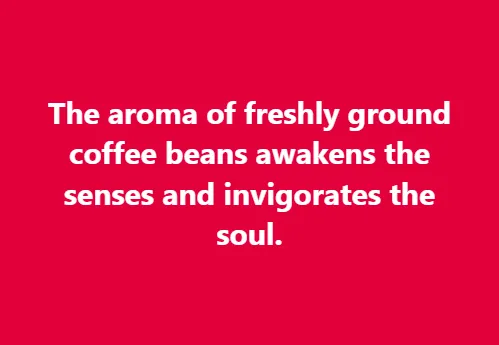
Conclusion: Elevate Your Coffee Experience with Ideal Beans
In conclusion, choosing ideal coffee beans can truly elevate your coffee experience to new heights.
By prioritizing high-quality, freshly roasted beans from reputable sources, you are giving yourself the gift of rich flavors, complex aromas, and a truly satisfying cup of coffee.
The right beans can make all the difference in the world – unlocking layers of taste and creating a sensory journey that will captivate your palate.
Whether you prefer a bold espresso or a smooth pour-over, investing in ideal beans is an investment in the very essence of what makes coffee so special.
Moreover, exploring different varieties and origins of coffee beans can open up a world of discovery for coffee enthusiasts. From fruity Ethiopian Yirgacheffe to earthy Sumatran Mandheling, each type offers its own unique profile and story.
Embracing this diversity not only expands your palate but also deepens your appreciation for the artistry behind every brew.
So next time you reach for your morning cup of joe, remember that selecting ideal beans isn’t just about fueling your day – it’s about savoring an experience that is as nuanced and delightful as it gets.


